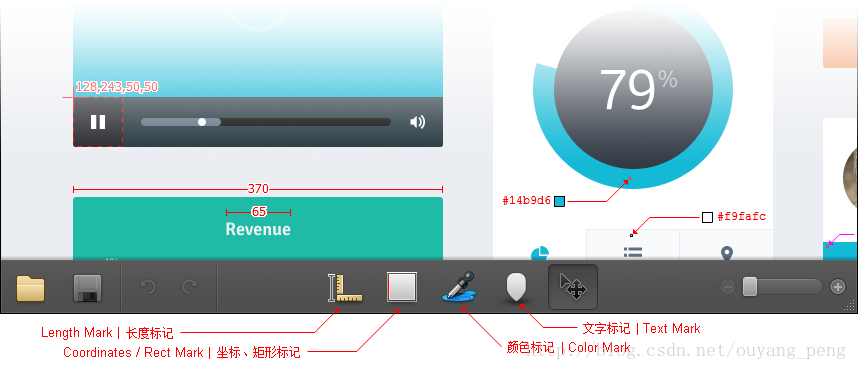編輯:關於Android編程
前文分析了build.prop這個系統屬性文件的生成http://blog.csdn.net/jscese/article/details/18699155,每個屬性都有一個名稱和值,他們都是字符串格式。屬性被大量使用在Android系統中,用來記錄系統設置或進程之間的信息交換。屬性是在整個系統中全局可見的。每個進程可以get/set屬性,這裡主要記錄在java層或者c++層如果使用,以及整個system_property運作流程。
/**
* Get the value for the given key.
* @return an empty string if the key isn't found
* @throws IllegalArgumentException if the key exceeds 32 characters
*/
public static String get(String key) {
if (key.length() > PROP_NAME_MAX) {
throw new IllegalArgumentException("key.length > " + PROP_NAME_MAX);
}
return native_get(key);
} /**
* Set the value for the given key.
* @throws IllegalArgumentException if the key exceeds 32 characters
* @throws IllegalArgumentException if the value exceeds 92 characters
*/
public static void set(String key, String val) {
if (key.length() > PROP_NAME_MAX) {
throw new IllegalArgumentException("key.length > " + PROP_NAME_MAX);
}
if (val != null && val.length() > PROP_VALUE_MAX) {
throw new IllegalArgumentException("val.length > " +
PROP_VALUE_MAX);
}
native_set(key, val);
}private static native String native_get(String key); private static native void native_set(String key, String def);
該接口類在初始化運行環境中注冊對應的cpp接口android_os_SystemProperties.cpp,實際操作通過JNI調用的是cpp文件對應的接口:
/frameworks/base/core/jni/AndroidRuntime.cpp中:
extern int register_android_os_SystemProperties(JNIEnv *env);
static JNINativeMethod method_table[] = {
{ "native_get", "(Ljava/lang/String;)Ljava/lang/String;",
(void*) SystemProperties_getS },
{ "native_get", "(Ljava/lang/String;Ljava/lang/String;)Ljava/lang/String;",
(void*) SystemProperties_getSS },
{ "native_get_int", "(Ljava/lang/String;I)I",
(void*) SystemProperties_get_int },
{ "native_get_long", "(Ljava/lang/String;J)J",
(void*) SystemProperties_get_long },
{ "native_get_boolean", "(Ljava/lang/String;Z)Z",
(void*) SystemProperties_get_boolean },
{ "native_set", "(Ljava/lang/String;Ljava/lang/String;)V",
(void*) SystemProperties_set },
{ "native_add_change_callback", "()V",
(void*) SystemProperties_add_change_callback },
};以set屬性為例,調用:
static void SystemProperties_set(JNIEnv *env, jobject clazz,
jstring keyJ, jstring valJ)
{
int err;
const char* key;
const char* val;
if (keyJ == NULL) {
jniThrowNullPointerException(env, "key must not be null.");
return ;
}
key = env->GetStringUTFChars(keyJ, NULL);
if (valJ == NULL) {
val = ""; /* NULL pointer not allowed here */
} else {
val = env->GetStringUTFChars(valJ, NULL);
}
err = property_set(key, val);
env->ReleaseStringUTFChars(keyJ, key);
if (valJ != NULL) {
env->ReleaseStringUTFChars(valJ, val);
}
if (err < 0) {
jniThrowException(env, "java/lang/RuntimeException",
"failed to set system property");
}
}
int property_set(const char *key, const char *value)
{
return __system_property_set(key, value);
}int __system_property_set(const char *key, const char *value)
{
....
memset(&msg, 0, sizeof msg);
msg.cmd = PROP_MSG_SETPROP;
strlcpy(msg.name, key, sizeof msg.name);
strlcpy(msg.value, value, sizeof msg.value);
err = send_prop_msg(&msg);
if(err < 0) {
return err;
}
return 0;
}static int send_prop_msg(prop_msg *msg)
{
struct pollfd pollfds[1];
struct sockaddr_un addr;
socklen_t alen;
size_t namelen;
int s;
int r;
int result = -1;
s = socket(AF_LOCAL, SOCK_STREAM, 0);
if(s < 0) {
return result;
}
memset(&addr, 0, sizeof(addr));
namelen = strlen(property_service_socket);
...
}
property_service 服務的啟動是在android初始化的時候在/system/core/init/init.c時建立:
int main(int argc, char **argv)
{
int fd_count = 0;
struct pollfd ufds[4];
...
int property_set_fd_init = 0;
...
queue_builtin_action(property_service_init_action, "property_service_init");
...
if (!property_set_fd_init && get_property_set_fd() > 0) {
ufds[fd_count].fd = get_property_set_fd();
ufds[fd_count].events = POLLIN;
ufds[fd_count].revents = 0;
fd_count++;
property_set_fd_init = 1;
}
...
if (ufds[i].revents == POLLIN) {
if (ufds[i].fd == get_property_set_fd())
handle_property_set_fd();
...
}
由init守護進程分配一個共享內存區來存儲這些屬性。並且通過__libc_init(...)—— __libc_init_common(...)——__system_properties_init();
由/bionic/libc/bionic/system_properties.c中的__system_properties_init()來初始化屬性系統的共享內存。
從property_service_init_action調用到/system/core/init/property_service.c中的啟動函數:
void start_property_service(void)
{
int fd;
load_properties_from_file(PROP_PATH_SYSTEM_BUILD);
load_properties_from_file(PROP_PATH_SYSTEM_DEFAULT);
load_override_properties();
/* Read persistent properties after all default values have been loaded. */
load_persistent_properties();
fd = create_socket(PROP_SERVICE_NAME, SOCK_STREAM, 0666, 0, 0);
if(fd < 0) return;
fcntl(fd, F_SETFD, FD_CLOEXEC);
fcntl(fd, F_SETFL, O_NONBLOCK);
listen(fd, 8);
property_set_fd = fd;
}
可以看到,在這裡加載了系統屬性文件到共享內存,文件定義在/bionic/libc/include/sys/_system_properties.h:
#define PROP_PATH_RAMDISK_DEFAULT "/default.prop" #define PROP_PATH_SYSTEM_BUILD "/system/build.prop" #define PROP_PATH_SYSTEM_DEFAULT "/system/default.prop" #define PROP_PATH_LOCAL_OVERRIDE "/data/local.prop"
屬性信息按照上面的順序被加載。後加載的屬性會覆蓋前面的屬性值(當屬性名稱相同的時候)。當上面加載完成後,最後加載的是駐留屬性,保存在/data/property文件中.
到這裡property_service已經啟動完畢!
在init守護進程中監聽到有屬性服務的事件時調用:
void handle_property_set_fd()
{
prop_msg msg;
...
if ((s = accept(property_set_fd, (struct sockaddr *) &addr, &addr_size)) < 0) {
return;
}
...
r = TEMP_FAILURE_RETRY(recv(s, &msg, sizeof(msg), 0));
...
switch(msg.cmd) {
case PROP_MSG_SETPROP:
...
if(memcmp(msg.name,"ctl.",4) == 0) {
// Keep the old close-socket-early behavior when handling
// ctl.* properties.
close(s);
if (check_control_perms(msg.value, cr.uid, cr.gid, source_ctx)) {
handle_control_message((char*) msg.name + 4, (char*) msg.value);
} else {
ERROR("sys_prop: Unable to %s service ctl [%s] uid:%d gid:%d pid:%d\n",
msg.name + 4, msg.value, cr.uid, cr.gid, cr.pid);
}
} else {
if (check_perms(msg.name, cr.uid, cr.gid, source_ctx)) {
property_set((char*) msg.name, (char*) msg.value);
} else {
ERROR("sys_prop: permission denied uid:%d name:%s\n",
cr.uid, msg.name);
}
...
}可以看到如果接收到的信息是以“ctl”開頭,進行check_control_perms(msg.value, cr.uid, cr.gid, source_ctx)鑒權處理。
這裡的傳入消息值,發送消息進程的uid以及gid。
這裡是控制權限數組:
/*
* White list of UID that are allowed to start/stop services.
* Currently there are no user apps that require.
*/
struct {
const char *service;
unsigned int uid;
unsigned int gid;
} control_perms[] = {
{ "dumpstate",AID_SHELL, AID_LOG },
{ "ril-daemon",AID_RADIO, AID_RADIO },
{NULL, 0, 0 }
};
在/system/core/include/private/android_filesystem_config.h中有各種權限的定義:
#define AID_ROOT 0 /* traditional unix root user */ #define AID_SYSTEM 1000 /* system server */ #define AID_RADIO 1001 /* telephony subsystem, RIL */ #define AID_BLUETOOTH 1002 /* bluetooth subsystem */ #define AID_GRAPHICS 1003 /* graphics devices */
有權限 就執行/system/core/init/init.c中的:
void handle_control_message(const char *msg, const char *arg)
{
if (!strcmp(msg,"start")) {
msg_start(arg);
} else if (!strcmp(msg,"stop")) {
msg_stop(arg);
} else if (!strcmp(msg,"restart")) {
msg_stop(arg);
msg_start(arg);
} else {
ERROR("unknown control msg '%s'\n", msg);
}
}
一般的消息值鑒權check_perms(msg.name, cr.uid, cr.gid, source_ctx)。
一般的控制權限數組:
/* White list of permissions for setting property services. */
struct {
const char *prefix;
unsigned int uid;
unsigned int gid;
} property_perms[] = {
{ "net.rmnet0.", AID_RADIO, 0 },
{ "net.gprs.", AID_RADIO, 0 },
{ "net.ppp", AID_RADIO, 0 },
...
};int property_set(const char *name, const char *value)
{
...
if(pi != 0) {
/* ro.* properties may NEVER be modified once set */
if(!strncmp(name, "ro.", 3))
return -1;
...
/* If name starts with "net." treat as a DNS property. */
if (strncmp("net.", name, strlen("net.")) == 0) {
if (strcmp("net.change", name) == 0) {
return 0;
}
/*
* The 'net.change' property is a special property used track when any
* 'net.*' property name is updated. It is _ONLY_ updated here. Its value
* contains the last updated 'net.*' property.
*/
property_set("net.change", name);
} else if (persistent_properties_loaded &&
strncmp("persist.", name, strlen("persist.")) == 0) {
/*
* Don't write properties to disk until after we have read all default properties
* to prevent them from being overwritten by default values.
*/
write_persistent_property(name, value);
#ifdef HAVE_SELINUX
} else if (strcmp("selinux.reload_policy", name) == 0 &&
strcmp("1", value) == 0) {
selinux_reload_policy();
#endif
}
property_changed(name, value);
return 0;
}
可以看到會判斷是否以“ro”字符串開頭,如果接收到的消息值,也就是要set的屬性值以這個作為開頭,就代表只讀,不能被改變.
如果共享內存中有則update_prop_info(pi, value, valuelen);沒有就保存到內存中。
如果屬性是有“net.”字符串開頭,當設置這種屬性的時候,“net.change”這條屬性也會被自動設置,其內容設為最後更新過的屬性名,用來記錄net.*屬性上面的變化。
如果屬性是有“persist.”字符串開頭,那麼就認為是駐留屬性,當修改的時候同時也會寫進/data/property文件中。
最後調用property_changed(name, value),通知屬性已經改變,更新屬性,僅僅在運行時可用的屬性不需要調用這個方法,除非它們能被數據綁定。
到這裡property_service服務已經大體分析完!
adb shell getprop 列出系統所有屬性
adb shell getprop | grep lcd 列出包含lcd的屬性
adb shell setprop
撰寫不易,轉載請注明出處http://blog.csdn.net/jscese/article/details/18700903。
 仿微信通訊錄右側快速定位字母表控件的實現
仿微信通訊錄右側快速定位字母表控件的實現
仿微信通訊錄右側快速定位字母表控件先看效果圖: 界面比較單調,湊合看,主要看功能。這種控件在很多應用的通訊錄的界面,MIUI裡面的通訊錄都有這個功能,其實這是一
 基於Android AIDL進程間通信接口使用介紹
基於Android AIDL進程間通信接口使用介紹
AIDL:Android Interface Definition Language,它是一種android內部進程通信接口的描述語言,通過它我們可以定義進程間的通信接口
 Android TextView中文本點擊文字跳轉 (代碼簡單)
Android TextView中文本點擊文字跳轉 (代碼簡單)
在web頁面中,有a標簽的超鏈接實現跳轉,同樣在Android當中,用TextView控件來顯示文字,實現它的事件來跳轉。用過微博Android手機端的朋友的都知道微博正
 【我的Android進階之旅】 高效的設計稿標注及測量工具Markman介紹
【我的Android進階之旅】 高效的設計稿標注及測量工具Markman介紹
前言 高效的設計稿標注及測量工具Markman介紹。最近有個煩惱是UI設計師可能太忙了,經常給出的UI設計稿中有很多地方都沒有標注,比如長度和顏色值等。這個時候每次都要通